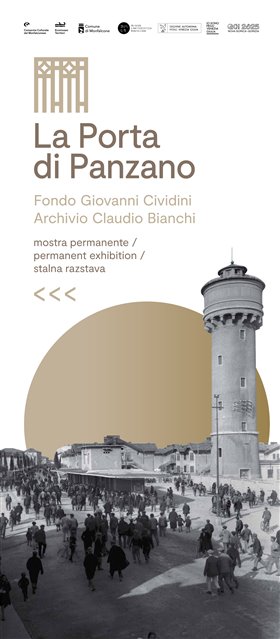
La Porta di Panzano
The entrance door to the workers' village of Panzano is a space dedicated to the narration of many stories which have, through the profound political, social and cultural changes of more than a century of industrial activity, contributed to build the identity of what is now our territory.
The Porta di Panzano (The Door of Panzano), is the exhibition space dedicated to the memory of families and of the work that offers to the visitors numerous historical-cultural, architectural and artistic insights, by making available the rich heritage collected and preserved by the CCM in the Archivio della Memoria (Memory Archive). A story in images and short texts from which to start an engaging and extraordinary journey that will take you through the streets of the neighborhood to the MuCa, the first and only museum dedicated to shipbuilding.
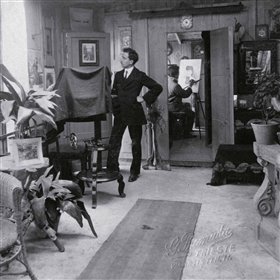
Giovanni Cividini Fund
The photographic fund preserves 2,300 images, taken by the photographer Giovanni Cividini (1879-1959) and his collaborators in various photographic studios that he owned in Trieste, Pordenone and Monfalcone. The main core of the collection consists of negatives on glass plate and film, describing the activity CNT Cantiere Navale di Monfalcone (Naval shipyard of Monfalcone) today Fincantieri- between 1920 and 1950. A story in images tracing the industrial and urban development and planning of the city. Particular attention was reserved documenting the expansion of the working village of Panzano, built by the will of the Cosulich brothers at the service of the naval shipyard they founded in 1908. The village was planned by the engineer Dante Fornasir applying the principles of "company town”.
The fund has been acquired by the Consorzio Culturale del Monfalconese. In 1985 Rolando Pangherz, owner of the studio Rolli in Trieste, donated to the CCM all the material that he saved from decay in a warehouse, photographic plates and films (about a thousand) made by Cividini and, in a small part, by his collaborator Mario Circovich. In the 90s, the photographer’s heirs donated the album “Comina”, created by Cividini himself with his own and others shots portraying the military airmen of Comina (Pordenone) over the First World War as well as a series of family photographs. The important work of recovery and integration of the fund in the following years, let to the valorisation of the fund trough study, catalouging, contact printing, the set-up of various exhibitions, the publication of some volumes devoted entirely to the photographer from Trieste and more recently, digitalization and the cataloging of his work. The direct contact with Giovanni Cividini family members and a thorough archival research have made possible an accurate reconstruction of his biography, highlighting a talented professional and, using the words of his son Omero, “a person who manifested his art with modesty, honesty and industriousness”.
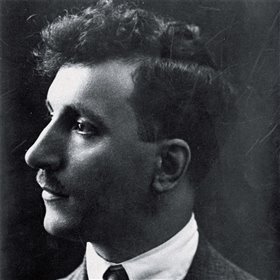
Giovanni Cividini (1879 - 1959)
Giovanni Cividini was born in Trieste on 26 September 1879 from a family of Pordenone origins and in circa 1895 he found a job at the photograpic studio Manenizza in Trieste. In 1905 Cividini opens his own studio in Via S. Spiridione 7 still in Trieste. The photographic genres to which he dedicated more are the portrait and the survey of buildings. The first important assigment on behalf of the Central Directorate of Adriatic Region sees him busy in the photographic census, from Istria to Gorizia of National League schools. In 1907 Cividini participates in two international exhibitions, in Paris and Madrid, earning awards for the exhibited work. Cividini was claimed as one of the best known professionals in Trieste and opens a new studio in Via San Nicolò, at Palazzo Terni.
The World War
During the Great War he flees first to San Vito al Tagliamento and then to Pordenone where he opened a small studio in Via G.B. Damiani, leaving the studio of Trieste to a sister-in- law married with an Austrian officer. At the beginning of the Great War, thanks to some costumers (including lieutenant pilots Pagliano and Gori) he begins to go to the Comina airport of Pordenone where he performs some shots (collected in the album “Comina”), where he met Gabriele d’Annunzio, who will commission a series of photographic portraits that in the end will meet his appreciation. In 1927 the poet thanked the photographer: “Dear Cividini, I got the photos. They are still the best; because they portray the best part of me, the skull.”
Following the call to the army, Cividini worked in the radiology department of Sant’Orsola Hospital in Bologna, the city where he begins to approach to industrial photography.
The 1920s and the shipyard
He returned to Pordenone in 1924, where he reopens a studio in Via Vittorio Emanuele II, where he performed a series of works for the cotton mill Amman-Veneziano, for Galvani and for the cotton mill Scaramelli from Cordenons. During the 1920s he begins to frequent the city of Monfalcone where, on assignment of the Trieste Naval Shipyard, he documents the activities of the shipyard and constructions of the workers’ village of Panzano where he settled in 1931 with his family. In the studio, located on the top floor of the building where he resided in Via Cosulich 105, he created a waiting room, a dark room and a room for photographic retouching. Between 1922 and 1927, he participates in a number of specialized exhibitions in industrial photography (Paris, Turin, Venice and Rome) winnig prizes. At the outbreak of the Second World War Giovanni Cividini is forced to move to San Vito al Tagliamento. In December of 1942, he opens a studio in Piazza del Popolo. His relationship with CRDA (United Shipbuilders of the Adriatic) and in particular with the Electromechanical workshops, he continues, although with less intensity, to work until the moment where it was created the “Department of Photography” of the shipyard, in the 50s. He ends his activity in San Vito, moving to Trieste where he died on December 18 1959.

The Claudio Bianchi Archive
Claudio Bianchi, the head from 1979 of the department of Anatomical Patology at the civilian hospital of Monfalcone, chose to move to Monfalcone (San Polo hospital) from Trieste, where he was the assistant of the illustrious professor Luigi Giarelli, to dedicate himself to research and study of the numerous cases of death and disease that are related to asbestos. He was among the first to report the connection between the use of materials containing asbestos and the onset of clinical cases and thanks to his studies in the 1992 the ore (mineral) was nationally banned with the law n.257 which forbids the extraction, import and product manufacturing containing asbestos, according to a divestmen program the deadline was set on the 28th April 1994. In 2017, after over fifty years of activity and a few months after Professor Bianchi passed away, his rich archive, built over many years of studies and made of various documents, observations, notes, photographs and publications, is donated to the Consorzio Culturale del Monfalconese with which the professor had actively collaborated since the 90s. Today the archive is kept at Villa Vicentini Miniussi in Ronchi dei Legionari, headquarters of the CCM, and here in the dedicated space it will be possible to consult the documents and view some work tools and furnishing that belonged to the illustrious professor.
The Story of the Bianchi Archive
After doctor Bianchi passed away his archive was moved from the headquarters of the “Studies centre LILT of Gorizia” to a deposit of the Civil Hospital of Monfalcone which in turn involved the Consorzio Culturale del Monfalconese offering the opportunity to transfer the whole archive at the Villa Vicentini Miniussi headquarters of the CCM, to guarantee its conservation and its enhancment,
with the agreement of the Bianchi family. Since April 2017 the Autonomous Region of Friuli Venzia Giulia (Central Directorate of enviroment and energy. Discipline service of waste management and polluted sites) supported a reorganization project of the archive guaranteeing an economical support. Thanks to many organizations operating on the territory, sensitive to the
teme ASBESTOS, over the years the participation in the project has increased so much that it established a network of partners which they have made available financial resources, scientific skills and volunteers.
Starting from the enhancment of the archive a project has developed about awareness, a campaign entitled Te lo racconto io l’amianto! (I will tell you about asbestos!) that has met the participation of the Municipality of Monfalcone, l’AEA (Associazione esposti Amianto), LILT, Ass. Scienza under 18, ConfServizi, Ass. Culturale Benkadì and many local schools.
First part
In 2018 it was entrusted to a cooperative of specialists the first stage of document reorganization. Immediate attention was paid to the selection of what was present in the archive, according to art.122 of Legislative Decree of 22 January 2004, no. 42. cultural heritage code and of the landscape, pursuant to art. 10 Law 6 July 2002, n. 137. Books, publications, medical journals, photocopies and extracts from research science, notebooks, loose sheets found also in ring binders; one part of it from the doctor Francesco Marabella (1923-2002) attentive scholar of various fields of medicine, especially asbestos correlated disease. Claudio Bianchi recognized he owed a lot to Marabella for the great number of publications, ideas, suggestions recived but especially that the “knowledge” is a value to pursue, through effort and sacrifice. The rearranged archive consist of 256 conservation units divides as follows: Personal documentation and training Deeds and correspondence Scientific research activity Legal proceedings and apprasials Albums, photos, posters Roberto Sturni fund Extracts from scientific publications Press review Francesco Mirabella fund.
Second part
In 2020, more documentation was found that went to integrate the Claudio Bianchi archive. Thanks again to the contribution of the Associazione Esposti Amianto, it was possible to integrate the previous work with an additional 38 units of preservation, keeping unchanged thr sequence of the pre-established archives: Personal documentation and training Deeds and Correspondence Scientific research activity Legal proceeding and expert reports Extracts from scientific publications Francesco Mirabella The archive as a whole consists of 294 units of conservation described in the inventories available at the Consorzio Culturale del Monfalconese.
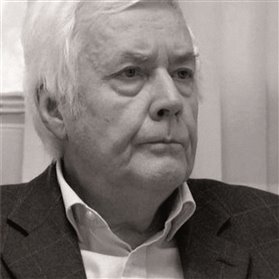
Claudio Bianchi a life in service
His researches are focused in particular on cancers caused by asbestos and the patology of dementia. He was a science popularizer, a consultant for various prosecutions and Courts as well as a consultant for subjects affected by asbestos-related diseases in Friuli Venezia Giulia and other italian regions. From 1997 until his death, he was president of the Provincial Section of Gorizia of the Italian League for the fight against cancer and member of the National Commission on Enviromental Carcinogenesis of the LILT (Lega Italiana per la Lotta contro i Tumori). Between 1999 and 2015 he released hundreds of articles for the Study Centre and Documentation on Enviromental Tumors of Monfalcone.
He was also the author of articles and essays on the Trieste literature and on the hisotry of religions.
Being fond about visual arts since his high school years, he created some personal exhibitions. He cured also exhibitions on the James Joyce stay in Trieste (held in Dublin, Trieste and Duino) and an exhibition on the effects of biological asbestos (submitted in Gorizia, Trieste, Monfalcone, Muggia and Rome). In 2003 he organized in Monfalcone an international conference on banning asbestos in Europe whose acts were published by the Ramazzini Foundation.
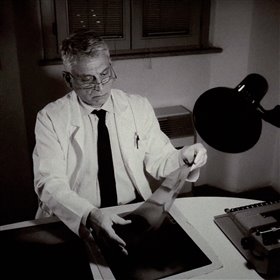
L’eredità di un medico contro l’amianto
A documentary film made as a part of the educational project Ti racconto io l'amianto! (I'll tell you about asbestos!) started in 2019 by the growing needs on the territory, with the intention of opening a new season of dialogue on the subject of asbestos and asbestos related diseases. Particular attention is paid to schools so that students of the secondary school (high school) can acquire knowledge and be aware of the asbestos problem.
Text by Roberto Covaz
Directed by Massimo Navone
Produced by ©2022 Consorzio Culturale del Monfalconese/Ecomuseo Territori
In collaboration with the Municipality of Monfalcone,
AEA - Ass. Exposed Asbestos Monfalcone, LILT Italian League for the Fight against Tumors
With the contribution of the Autonomous Region of Friuli Venezia Giulia
Actors in order of appearance
Marina Dorsi archivist
Alessandra Bianca first visitor
Enrico Taunisio second visitor
Franco Ongaro Prof. Claudio Bianchi
Assistant Director Annalisa Delneri
Video shooting and editing Nicola Marchesin
Photography and audio Giacomo Bisaro
Technical consultancy Silvio Trevisan
Music Clouds by Acreage
Archival reordering Cooperativa Archivisti Paleografi of Trieste
Organizational coordination "Stropula Cantieri Teatrali" Aps Monfalcone
Thanks to the Bianchi family, ASUGI Giuliano Isontina University Health Authority
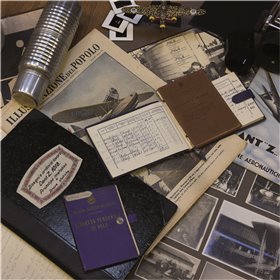
L'Archivio della Memoria
The Memory Archive and its Photo Library
The Consorzio researches, collects and preserves documents related to the history of the Monfalcone area: documents, publications, diaries, letters, objects, audio and video testimonials, poetry and artistic works, donated or loaned by public organizations and private citizens. All materials are made available to the community and can be consulted for researches, studies, publications or exhibitions. The Archive has one section dedicated to photographic material that in over forty years of activity of the Consorzio has it endowed with a heritage of over 40,000 vintage photographs and an interesting collection of historical cameras dating back to the early twentieth century. The Archive has a library specialized in the history of photography.Memory Hunters
It is a project promoted and created by The Consorzio Culturale del Monfalconese/Ecomuseo Territori in collaboration with many associations present on the territory, but also the numerous people who want to share the memory of a community making available: documents, publications, diaries, letters, audio and viedo testimonies, old amateur movies, objects, photographs that help nourish (feed) the CCM Archivio della Memoria. The material are stored and available for the community, accesible at the offices of Villa Vicentini Miniussi in Ronchi dei Legionari and are a veritable deposit of local memories and stories. A substantial part of the heritage made of objects, memories and knowledge collected over the years which also contributed to the creation of the exhibition itinerary MuCa- (Monfalcone Shipbuilding Museum).
You can contribute too to enrich the information and memories that are important to the community, which give a lot to the memories of our families and local communities.
Write to: info@territori.it or call: +39 0481474289
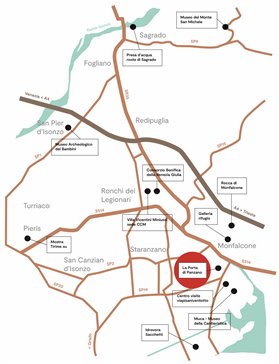
Ecomuseo Territori- People and memories between the Karst and the Isonzo
The name of the ecomuseum "Territories" derives from from the name that was given during the Venetian period to the area of the historic "Territories" of Monfalcone, the Bisiacaria, characterized by the specific dialect spoken, called bisiac. Geographically well-defined between the Isonzo river and the Karst region, it has always been a land of "moving borders", suited to the intermingling cultures, languages that represent one of the riches. The use of the plural form, TERRITORIES, emphasises the approach that we want to undertake the recount these lands, which where, and remain today, a crossroads of Peoples and of Memories. The Territories' area promotes their sustainable development with the direct partecipation of the citizens, who are the real protagonists of the concrete steps to protect and enhance the identity and resources of Bisiacaria, its landscape, knowledge and traditions toghether with its cultural and artistic heritage. The ecomuseum's main location for its interpretation, documentation and information is the Villa Vicentini Miniussi, the headquarters of the Consorzio Culturale del Monfalconese, where there is a specialist library, an Historical Photo Library, the Memory Archive and a venue for regualr meetings, conferences and exhibitions.
The town and villages around Monfalcone within which the ecomuseum operates lie on a smal strip of land at the extreme easter edge of the Po-Venetian plain; the Isonzo river, the Karst plateu and the Adriatic sea demarc its geographical boundaries, enclosing within them a treasure trove of natural and historical wonders. Roman roads, the trenches of the Great War and military structures from the Cold War, all set within a natural enviroment of rugged beauty, represent the still-visible tracesof a borderland that has often been at the centre of tragic events, bit that has also always been able to look to the future. The shipyard of Monfalcone, for example, after a century of activity, has become a benchmark for the world's cruise ships. The local gastronomy has its roots in Central European cuisine. Here you can enjoy a great ariety of local products and dishes including gnocchi sbrovada (a kind of sauerkraut), the cured meats and cheeses of the Karst, Adriatic fish dishes and traditional dessert, the one that stands out among these is the Tirime su- Coppa VetturinoTM made by Mario Cosolo, ancestor of the most famous dessert in the world, Tiramisu. The dessert was born in Friuli Venezia Giulia, originally packaged in two well documented in the respective localities of Pieris (GO) and Tolmezzo (UD) and it is been recognized by the Ministry of Agricultural Food and Forest Policies with the inclusion on the list of agri-food products from FVG (Pat). There is no lack of many important varieties of white and red DOC Friuli Isonzo and Karst wine.
The Ecomuseo territori includes the area of the municiplaities of Doberdò del Lago, Fogliano-Redipuglia, Monfalcone, Ronchi dei Legionari, Sagrado, San Canzian d'Isonzo, San Pier d'Isonzo, Saranzano and Turriaco. Together with the managing body- Consorzio Culturale del Monfalconese- they bring together 24 associations and public institutions that are active in the Monfalcone area.